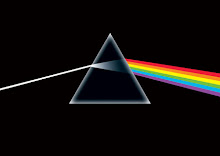 It has been almost a year since then. Much cricket has happened. Life changing decisions have been taken. Many other equally historic places have been visited. But I remember the feeling that the first sight of the fabled greens inspired as if it was yesterday. It was beyond inspiration. It was just plain and simple worship.
It has been almost a year since then. Much cricket has happened. Life changing decisions have been taken. Many other equally historic places have been visited. But I remember the feeling that the first sight of the fabled greens inspired as if it was yesterday. It was beyond inspiration. It was just plain and simple worship.The tour of Lord’s began in the museum and was conducted by an old MCC member, who had spent 60 years watching the game, and was everything I imagined an MCC member to be – filled with a genuine love for the game, full of anecdotes, with a deep affection for the ground, and without the traditional so-called stiff British upper lip. A delightful gentleman called Martin Charles.
The museum had the Ashes trophy – “the most important trophy here for Englishmen. Though if we win tomorrow, the T20 World Cup trophy will probably find a place beside it,” said Martin with a smile. That, however, was not what my eyes were searching for. I was looking for another trophy, but it wasn’t there in the museum. I would have to wait to see it.
 The tour continued, and we walked into the stands. The slope – oh yes, the famous Lord’s slope – was very visible. As was the magnificent media centre and the Father Time weather-vane. All of it was as far as possible from the noise of Twenty20 cricket – which was exactly how I wanted it to be. Tradition seemed to breathe out of every brick, every blade of lovingly manicured grass on the outfield. Sadly, we weren’t allowed to go on to the field of play and so a childhood dream of standing mid-pitch at Lord’s and play-acting winning the World Cup for India remained unfulfilled.
The tour continued, and we walked into the stands. The slope – oh yes, the famous Lord’s slope – was very visible. As was the magnificent media centre and the Father Time weather-vane. All of it was as far as possible from the noise of Twenty20 cricket – which was exactly how I wanted it to be. Tradition seemed to breathe out of every brick, every blade of lovingly manicured grass on the outfield. Sadly, we weren’t allowed to go on to the field of play and so a childhood dream of standing mid-pitch at Lord’s and play-acting winning the World Cup for India remained unfulfilled.Stimulating as these sights were, I couldn’t concentrate for them on long. My gaze kept being drawn to the red-tinged players’ balcony. Below it was the Long Room, the inside of which couldn’t be seen from the stands of course. That was our next destination. The goose-bumps were out in full force.
As dressing rooms go, the one at Lord’s is probably no better in terms of facilities than the ones at any major cricket ground. That’s not how I saw it of course. We were taken to the visitors’ dressing room – and with the first step inside, I felt I was stepping into history. Concretely and tangibly. There were the famous Honours Boards. The boards that contained the list of every visiting batsman to have scored a Test century at Lord’s and of every bowler who had taken a five-wicket haul. No Tendulkar, no Lara, no Ponting on them. And madly, incongruously and at the same time wonderfully – the name of one AB Agarkar on the batsmen’s Board.
Martin showed us various players’ favourite spots in the dressing room. Where Adam Gilchrist liked to sit, where Lara always sat. One of the seats by the corner was the one Sachin Tendulkar always sat in when he had visited Lord’s. (I sat down on it for a minute of course – how could I not!)
 And then I stepped out onto the players balcony. The same balcony that every visiting batsman had signaled on reaching a landmark. The same balcony where Sourav Ganguly gave Indian cricket its image of the decade with shirt-less, naked aggression that signaled that the days when India surrendered meekly were dead forever. The same balcony where Kapil Dev raised the World Cup in 1983. It was at once a lump-in-the-throat and fiercely proud moment to stand there. I pinched myself. I had to – people who come so close to a dream in reality are not always sure if it’s real anymore.
And then I stepped out onto the players balcony. The same balcony that every visiting batsman had signaled on reaching a landmark. The same balcony where Sourav Ganguly gave Indian cricket its image of the decade with shirt-less, naked aggression that signaled that the days when India surrendered meekly were dead forever. The same balcony where Kapil Dev raised the World Cup in 1983. It was at once a lump-in-the-throat and fiercely proud moment to stand there. I pinched myself. I had to – people who come so close to a dream in reality are not always sure if it’s real anymore.The next walk was through the Long Room. It’s probably the most aptly named room in the most aptly named cricket ground. It’s a two minute walk through what is essentially a broad corridor, lined with the richest cricketing history you’d hope to see. Martin was at his wittiest, describing how harrowing or pleasurable the walk would be. For batsmen walking out to the field, he said, “Irrespective of nationality, the members seated all round always stood up to applaud them onto the field. When they returned from the field, they did the same. Of course, in the case of English batsmen, they often had to stand back up to applaud them in immediately after they had applauded them out.”
The room was not just an inanimate concrete structure. It actually seemed to be alive. If mere visitors could feel it, what would players have felt, I wonder. And then I saw it – the one object that I had craved to see more than any other. More than the original Ashes trophy, more than the innumerable historic photographs, cricketing memorabilia. Even more than I wanted to stand in the players’ balcony.
The Prudential Cup of 1983.
I have visited temples, ashrams, holy shrines. I have been through phases where I alternately considered Pink Floyd, or Dire Straits, or PG Wodehouse, or Douglas Adams, or any one of Tendulkar/Dravid/Kumble/Laxman/Ganguly god-like. I have never, ever felt the deep sense of reverence I felt when I first saw the Cup. Never before, not since. Not yet, at least.
The players balcony and the Long Room were prohibited zones for photography. Before we came to the Cup, our touring party – which consisted of some 30-odd cricket lovers – had been fairly quiet. However, there was always the odd outbreak of some chatter. Indians formed about half to one third of the tourists in the party. When we reached the case that Martin pointed out as the one holding the Cup, there was pin-drop silence. The actual kind of silence where you can hear a loud breath. Except that the room seemed to have caught its collective breath.
If watching Sachin Tendulkar score a match-winning century in a World Cup final is the way that Indian fans can pay noisy tribute to something they find god-like and reverent, this was the way to pay silent tribute. The silence was broken by a fellow Indian, who I’m sure articulated what every other countryman there was thinking. He simply asked Martin, almost pleadingly, “I know we cannot take photos here, but can I take just one - of the Cup?” There was a deeply understanding and commiserating smile from Martin, before he regretfully said that it would just not be possible.
I could almost hear the unsaid sighs as a dozen cameras that were half taken out of their covers were put back in.
After that moment, the rest of the tour seemed a little bit of a blur. An enchanting, magical one, but a blur nonetheless.
It’s been more than nine months since that day, and we are at the eve of another World trophy final. London is a far way away from India. I really don’t want to have to travel so much just to feel that magic again. Bring the trophy home this time, won’t you boys?






5 comments:
Saurabh, I was there...when it all happened - almost 3 decades ago. Right there, with my dad. Still remember Kapil's palmolive smile on that balcony, the puzzled look on haynes's face, the way kapil was running towards us in a strangely clownish way to take that catch of Viv. Nostalgia - uncontaminated nostalgia
@ronmuker: You were there? wow... what an amazing day it must have been.
Amazing Mate...brings tears to the eyes...Cud feel the sentiment at missing the moment...There u go, Now our boys have brought it home..We can click as much as we want coz it is OUR'S :)
@PJ: yes, they've brought it home! no better feeling! :)
Vicky64: I was preparing for my graduation exams which were starting the next day and I could hardly take my eyes off the TV and ears off the Radio though mind was on the exam. The Viv Richards catch is one of the best and most important in my life time. I have now seen the Indian Team win 1983 WC, T20 WC 2007 and now WC 2011. Kudos to the team
Post a Comment